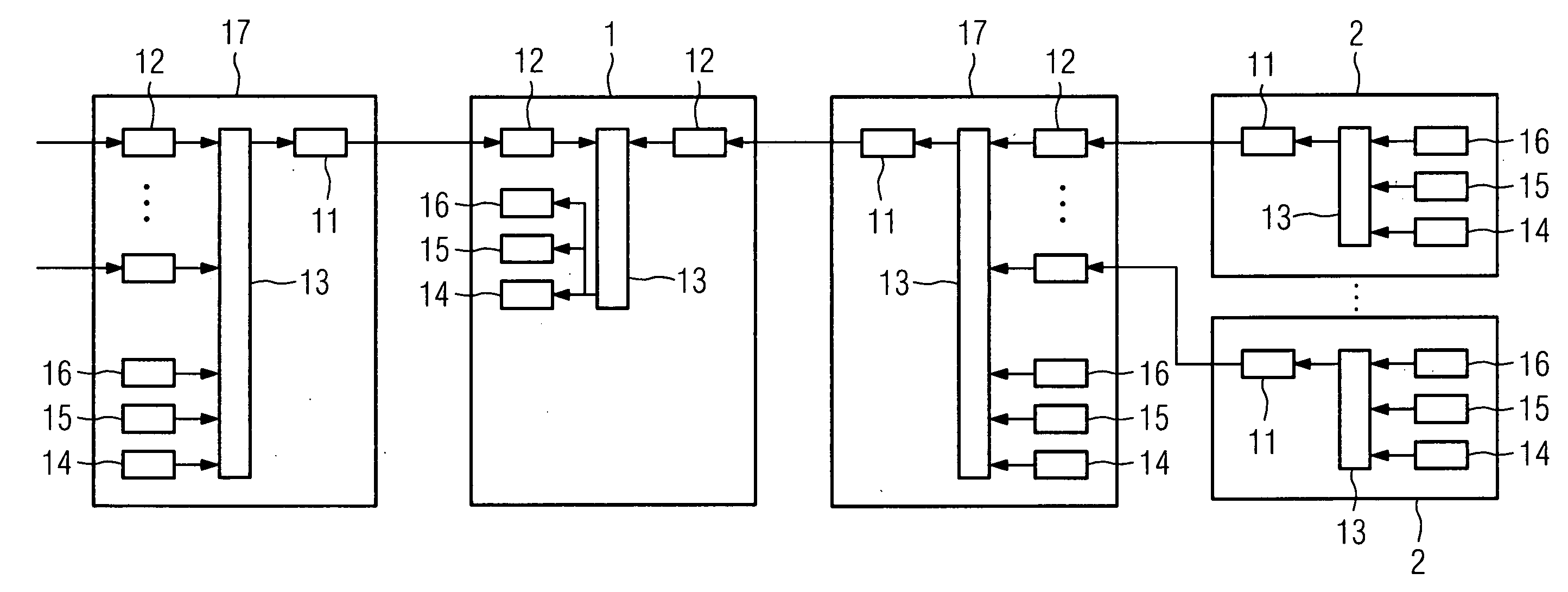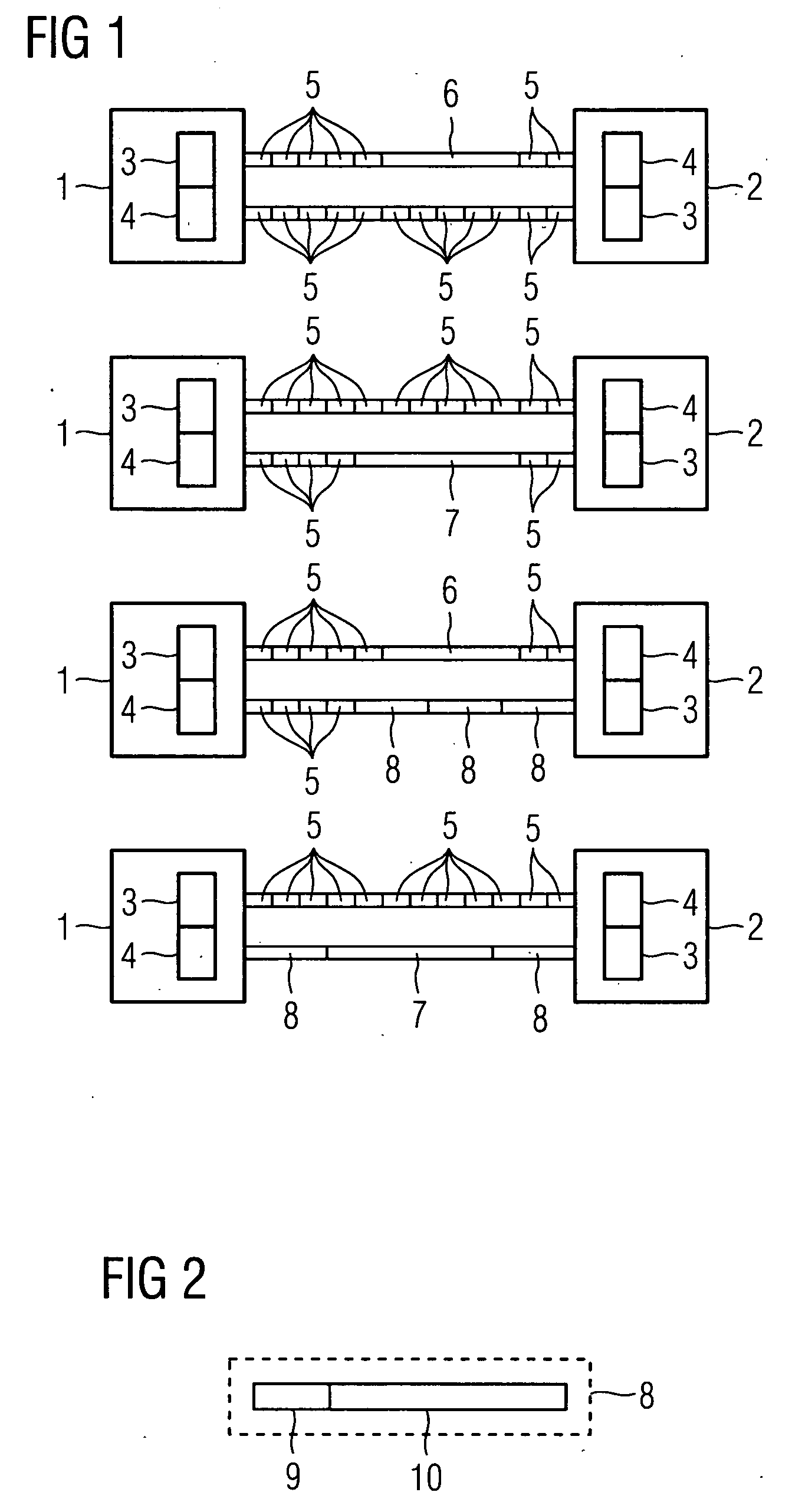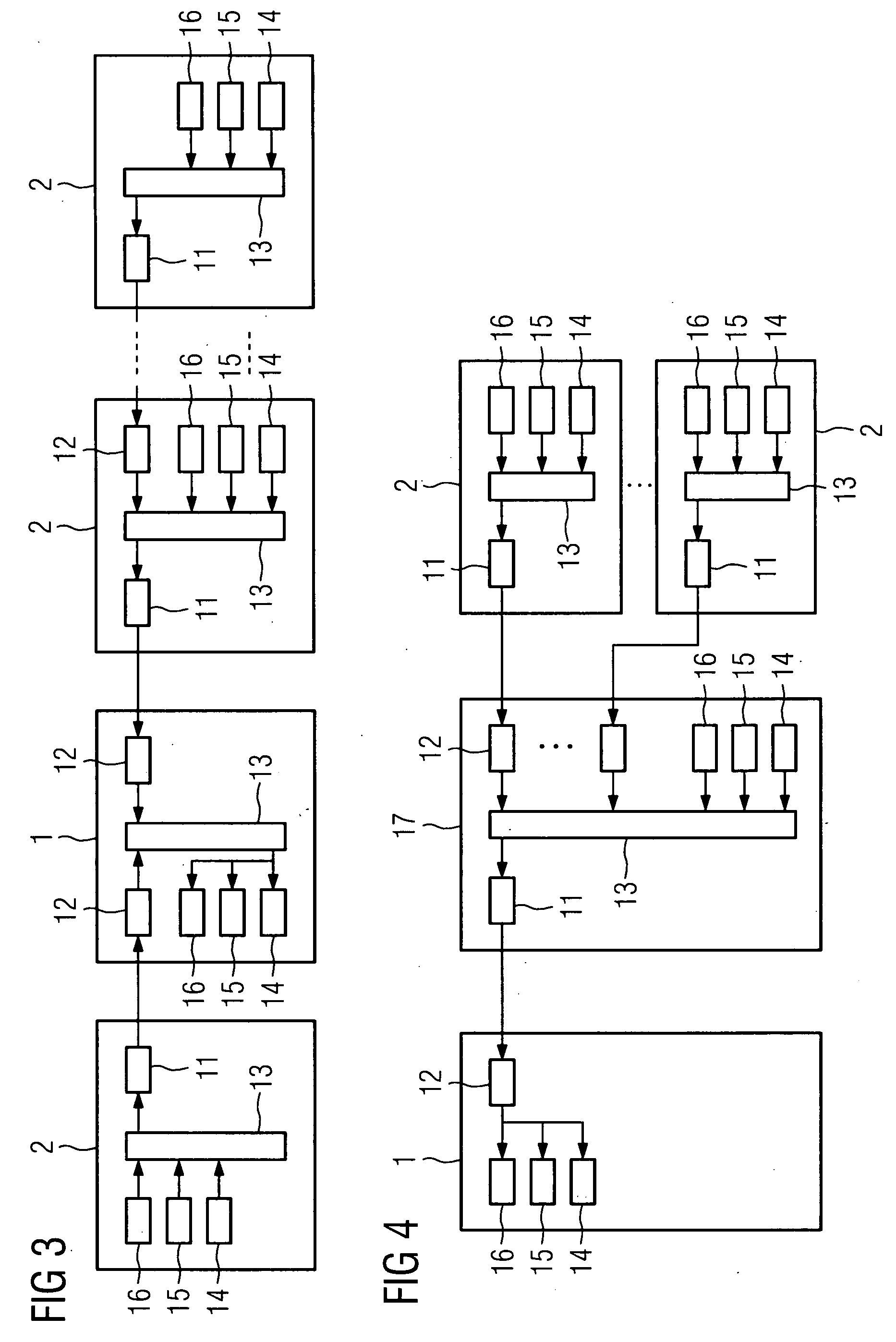Event signaling between peripheral modules and a processing unit
a technology of peripheral modules and processing units, applied in data switching networks, instruments, frequency-division multiplexes, etc., can solve the problems of no known system operating at higher baud rates, no guarantee, and high latency tim
- Summary
- Abstract
- Description
- Claims
- Application Information
AI Technical Summary
Benefits of technology
Problems solved by technology
Method used
Image
Examples
Embodiment Construction
[0040]FIG. 1 shows a flowchart of communication between a processing unit 1 and a peripheral module 2. Transmission between these two modules 1, 2 is undertaken using point-to-point-connections between the communication ports 3, 4. For each direction of transmission there is a separate transmission channel. The transmission between a transmitter 3 and a receiver 4 can in this case be based on LVDS (Low Voltage Differential Signaling). This is a differential interface standard for high-speed data transmission (ANSI / TIA / EIA-644-1995, IEEE 1596.3-1996). The pairs of lines between two ports are omnidirectional.
[0041] Furthermore the individual symbols of which the data to be transmitted is composed are transcoded into a larger symbol space. This can for example occur with an 8 B / 10 B encoding, i.e. an 8-bit symbol is converted at the transmitter 3 by an encoder into a 10-bit symbol and converted back at the receiver 4 by a decoder into an 8-bit symbol. Thus there remains an unused symb...
PUM
 Login to View More
Login to View More Abstract
Description
Claims
Application Information
 Login to View More
Login to View More - R&D
- Intellectual Property
- Life Sciences
- Materials
- Tech Scout
- Unparalleled Data Quality
- Higher Quality Content
- 60% Fewer Hallucinations
Browse by: Latest US Patents, China's latest patents, Technical Efficacy Thesaurus, Application Domain, Technology Topic, Popular Technical Reports.
© 2025 PatSnap. All rights reserved.Legal|Privacy policy|Modern Slavery Act Transparency Statement|Sitemap|About US| Contact US: help@patsnap.com



